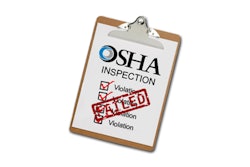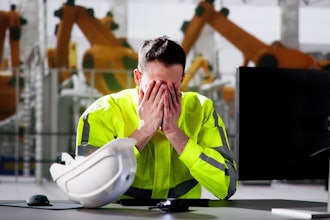There have been significant improvements in the area of safety over the past few decades, but in spite of this, manufacturing is still considered to be a dangerous occupation. Injuries caused on manufacturing floors have resulted in major lawsuits and damaged reputation, apart from affecting employee morale and reduced productivity. While it may be impossible to prevent every single injury, you can reduce the rate of injury significantly by employing a few safety measures. One way to do so is by choosing the right material handling equipment.
Let us look at five other safety measures that help in reducing accidents on the shop floor.
Assess Machine Risk
One way to improve safety is by identifying, analyzing and removing hazards that employees may be exposed to in the workstation. Assess machine and electrical risk by asking three critical questions:
- What hazards are the employees exposed to?
- How can the hazards harm the employees?
- How can you remove or control these hazards?
Once you can clearly answer these questions, you will be able to identify numerous areas where you can make safety improvements.
Training
An unsafe work environment is usually a result of improper training. If the employees are not aware of the potential dangers on the manufacturing floor, they will put themselves at risk of serious accidents. You can eliminate this risk by providing safety training and ensuring the new employees are taught essential safety practices. Train them to use equipment such as industrial floor scales correctly and in a way that doesn’t put them at any risk. Make training sessions a priority from the beginning rather than as an afterthought.
Use Personal Protection Equipment
Personal protection equipment, also known PPE, is essential to employee safety. You must have access to the right kind of PPE for the tasks being performed by your employees. It is equally critical to check if the equipment is outdated or aged as it could increase the risk of injury. Consult with your employees as well to understand which safety equipment they feel they should have. For processes where employees switch tasks often, place the PPE where they can have quick access so that productivity and efficiency don’t get affected. Remember that if you decide to cut costs in the safety department, you could end up paying more in workers compensations or lawsuits.
Encourage Clean and Organized Workplace
If the workstation is messy, chances of employees tripping, falling and hurting themselves increase significantly. Encourage and enforce the fact that workspace must be clean and organized for the sake of their own safety. It should be an ongoing activity rather than a weekly task. Post signs around the warehouse that would remind employees of the risks that are inherent in their jobs and pointers of what they should be doing to comply with safety regulations. It can be something as simple as ‘helmet area’ or ‘wash your hands’ signs in areas where weighing scales are used and in the washrooms respectively.
Emphasize the importance of good housekeeping and encourage employees to keep their colleagues safe by keeping their workstations clean and organized.
Recognize Best Practices
Experienced floor workers have the most knowledge of to how to keep the workspace and employees safe. Take their input and publish a series of ‘best practices’ for floor safety. Workers would already be cautious about avoiding accidents and injuries, but you can give them a boost by setting safety policies. Keep OSHA regulations in mind when you spread safety awareness and encourage safe practices.
Don’t compromise manufacturing safety at any point. Enforcing safety measures demonstrate to your employees that you care about their safety and well-being, thus boosting their morale as well.
Kevin Hill heads up the marketing efforts at Quality Scales Unlimited in Byron, CA.























